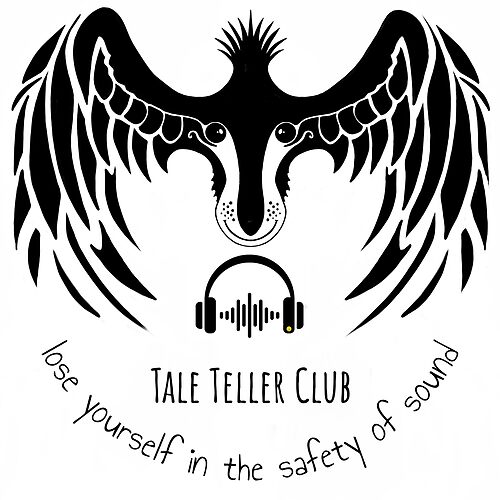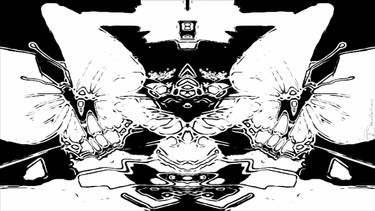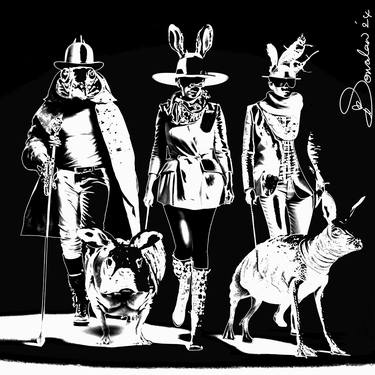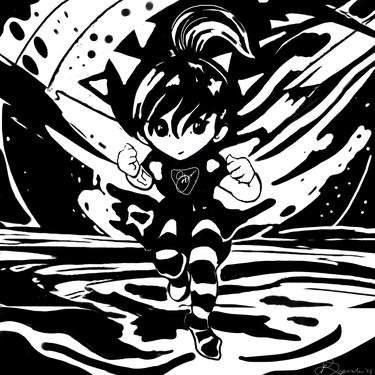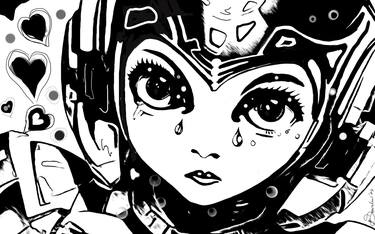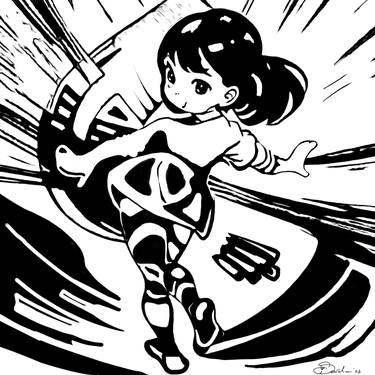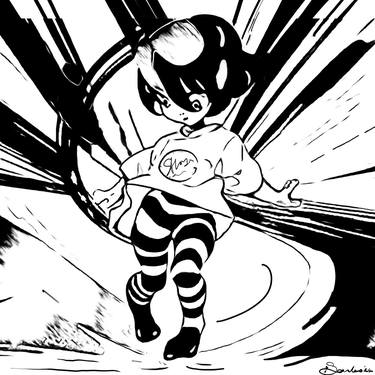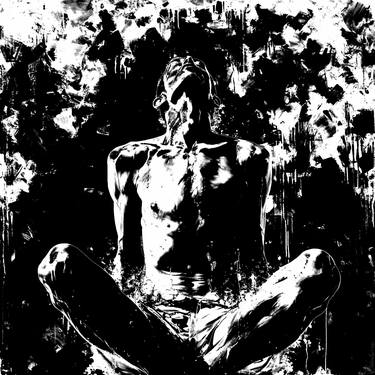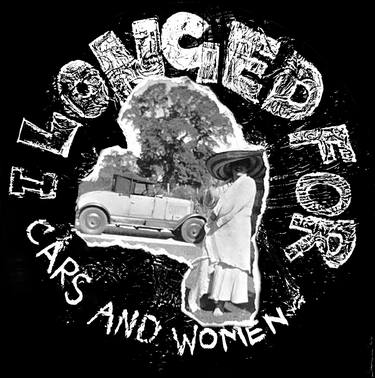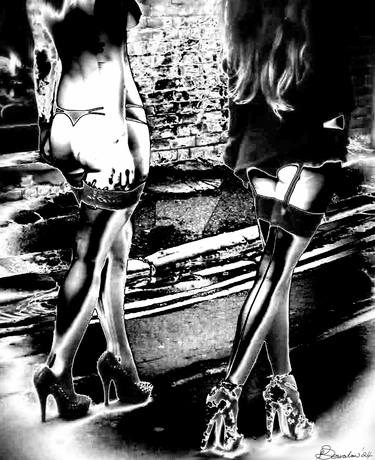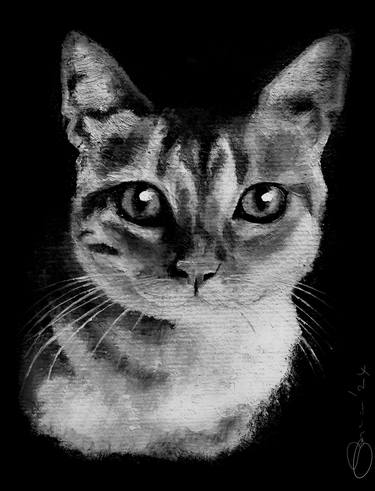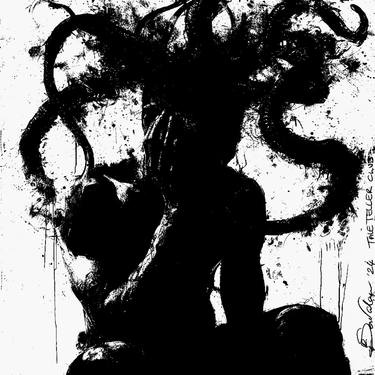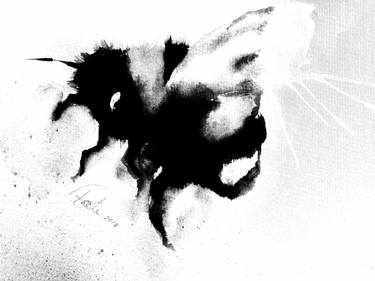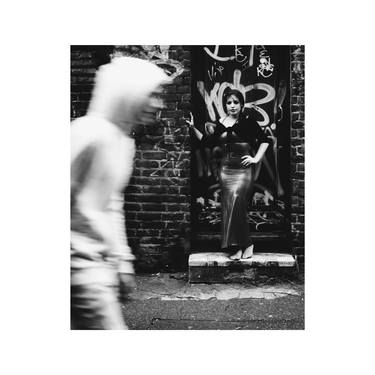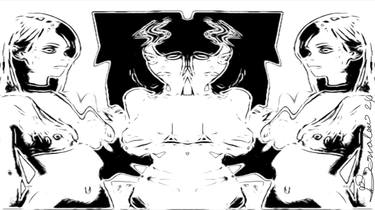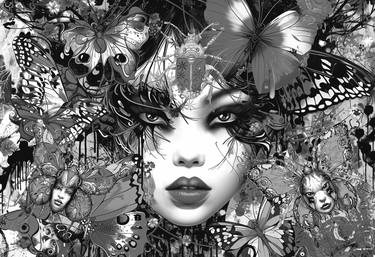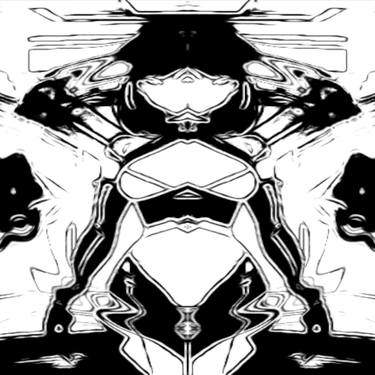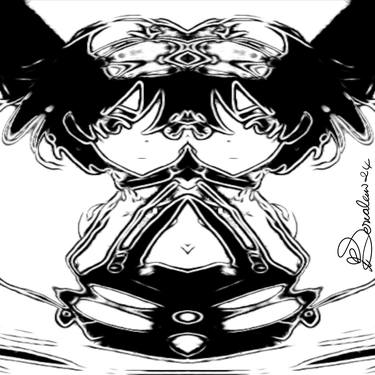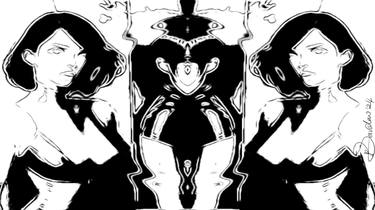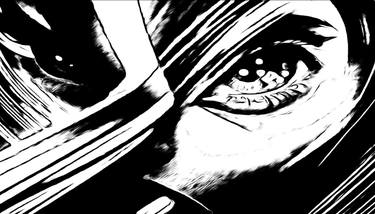Chapter 1: The Origins of Makeup
Ancient Beauty Rituals
Throughout history, makeup has been an integral part of human culture, used for various purposes such as enhancing one's beauty, expressing cultural identity, and even as a form of protection. Ancient civilizations, in particular, had unique beauty rituals that not only showcased their creativity but also reflected their beliefs and values.
In ancient Egypt, makeup held a significant role in both the social and religious contexts. Egyptians believed that adorning oneself with cosmetics not only enhanced their beauty but also protected them from evil spirits. One of the most iconic beauty rituals of ancient Egypt was the use of kohl, a black powder made from galena or lead sulfide. Both men and women would line their eyes with kohl, not only to enhance their beauty but also to shield their eyes from the harsh desert sun. The Egyptians also used various natural ingredients such as henna, beetroot, and red ochre to color their lips and cheeks, giving them a vibrant and youthful appearance.
Moving to ancient Greece, makeup was seen as a symbol of status and class. Greek women, known for their pale complexion, would use a mixture of white lead and chalk to achieve the desired fairness. Additionally, they would use crushed berries and fruits to stain their lips and cheeks, creating a rosy glow. Greek women also took great care of their hair, using olive oil and honey to nourish and style it, giving them a sense of elegance and femininity.
In ancient China, makeup was not only used for beauty purposes but also as a way to align oneself with the principles of yin and yang. Chinese women valued a pale complexion as a sign of beauty and purity, so they used rice powder and white lead to achieve a pale, porcelain-like look. They also used natural ingredients such as safflower and hibiscus to create lip stains and blushes, enhancing their features while maintaining a natural appearance.
These ancient beauty rituals not only offer us a glimpse into the past but also inspire us to appreciate and celebrate the diverse history of makeup. By understanding the origins of these practices, today's makeup users can embrace their own creativity and explore the vast possibilities that makeup offers. From ancient Egypt to Greece and China, the art of enhancing one's beauty has truly stood the test of time. So, next time you pick up your favorite lipstick or eyeshadow palette, remember the ancient beauty rituals that paved the way for the makeup techniques we enjoy today.
Early Uses of Natural Ingredients
Subchapter: Early Uses of Natural Ingredients
Introduction:
In the quest for beauty and self-expression, humans have been using makeup for centuries. From ancient civilizations to modern times, makeup has played a significant role in enhancing our features and expressing our individuality. In this subchapter, we will delve into the early uses of natural ingredients in makeup, exploring the fascinating history behind the products we use today.
1. Ancient Egypt:
The history of makeup can be traced back to the ancient Egyptians, who used a variety of natural ingredients to enhance their beauty. They used kohl, a mixture of soot and galena, to outline their eyes, creating the iconic winged eyeliner look. Additionally, they used crushed gemstones and pigments from plants to create vibrant eyeshadows and lip colors.
2. Ancient Greece and Rome:
During the reign of ancient Greece and Rome, makeup became more sophisticated. Women used crushed berries and red ochre to create blush and lip stains. They also used white lead to achieve a pale complexion, which was considered a symbol of beauty and aristocracy.
3. Medieval Europe:
In medieval Europe, makeup was associated with witchcraft and vanity, leading to its decline. However, natural ingredients such as crushed flowers, herbs, and plants were still used by women to create natural-looking blush and lip stains. These ingredients were often sourced from their gardens or the surrounding nature.
4. Renaissance and Victorian Era:
During the Renaissance and Victorian era, makeup regained popularity. Women used natural ingredients like beetroot and crushed roses to create lip stains. They also used rice powder and chalk to achieve a porcelain-like complexion. However, the excessive use of lead-based cosmetics during this period led to severe health issues.
5. Traditional Cultures:
In various traditional cultures, natural ingredients have been used in makeup for centuries. Indigenous tribes around the world used natural pigments, clay, and crushed minerals to create face paint, symbolizing different rituals, status, or cultural identity.
Conclusion:
The early uses of natural ingredients in makeup have paved the way for the cosmetics industry we know today. From ancient Egypt to traditional cultures, natural ingredients have played a vital role in enhancing beauty and expressing individuality. As makeup users, it is essential to appreciate the historical significance of these natural ingredients and their impact on the evolution of makeup techniques. By understanding our beauty heritage, we can make informed choices about the products we use and celebrate the rich history of makeup.
The Influence of Ancient Civilizations
The history of makeup is a fascinating journey that takes us back in time to the ancient civilizations where the art of enhancing one's appearance first emerged. The influence of these ancient cultures can still be seen in the makeup techniques we use today. In this chapter, we will delve into the ways in which ancient civilizations have shaped the world of makeup and explore the fascinating history behind some of our most beloved beauty routines.
One of the earliest civilizations to embrace makeup was ancient Egypt. The Egyptians believed that beauty was a sign of holiness, and they used makeup not only for aesthetic purposes but also as a way to connect with their gods. They created elaborate cosmetics using natural ingredients like kohl, which they used to line their eyes, and henna, which they used to color their lips and nails. The iconic winged eyeliner and bold lip colors that we still adore today can be traced back to the ancient Egyptians.
Moving on to ancient Greece, we discover a culture that valued beauty and aesthetics in art and everyday life. Greek women used a variety of cosmetics, including white lead to create a pale complexion and crushed berries to add a pop of color to their lips and cheeks. The Greeks also introduced the concept of skincare, developing creams and oils made from ingredients like olive oil and honey. The emphasis on a flawless complexion and natural radiance can be attributed to the influence of ancient Greece.
In ancient Rome, makeup took on a more decadent and theatrical form. Roman women used lead-based cosmetics to achieve a pale complexion and applied vibrant pigments to their eyes and lips. They even used face masks made of ingredients like sheep fat and crocodile dung! The Romans valued extravagance and opulence, and their love for bold colors and dramatic makeup continues to inspire modern beauty trends.
The ancient civilizations of Egypt, Greece, and Rome laid the foundation for the art of makeup as we know it today. Their innovative techniques, use of natural ingredients, and appreciation for beauty have influenced generations of makeup users. By understanding the historical roots of our favorite beauty rituals, we can develop a deeper appreciation for the artistry and cultural significance behind them.
As makeup users, we owe a debt of gratitude to these ancient civilizations for paving the way for our modern beauty routines. The influence of their techniques and ideals can still be seen in the products and trends we embrace today. So, the next time you apply your favorite lipstick or experiment with a new eyeshadow look, remember that you are partaking in a rich and vibrant history that dates back thousands of years.
Chapter 2: Makeup in Ancient Egypt
The Role of Cosmetics in Egyptian Society
In the vast tapestry of human history, few societies have been as influential in shaping the world of cosmetics as ancient Egypt. The use of makeup in Egyptian society was not merely a frivolous pursuit; rather, it held a deep cultural significance that was intertwined with their beliefs, rituals, and societal structures. This subchapter explores the profound role of cosmetics in Egyptian society and how it has shaped the history of makeup.
Egyptians, both men and women, adorned themselves with cosmetics for various reasons. The application of makeup was seen as an art form and a means of self-expression, but it also served practical purposes. The harsh desert climate necessitated the use of cosmetics to protect the skin from the scorching sun and dry winds. Egyptians developed a range of makeup techniques, from using kohl to darken the eyes and eyebrows to creating intricate designs on their bodies using henna.
However, the significance of cosmetics in ancient Egypt transcended mere beauty and protection. Makeup was deeply intertwined with religious beliefs and rituals. Egyptians believed that wearing makeup would invoke the favor of the gods and protect them from evil spirits. They adorned themselves with special colors and symbols associated with their deities, such as green for Osiris and black for Horus. The act of applying makeup became a sacred ritual that connected them to the divine.
Furthermore, cosmetics played a crucial role in Egyptian social hierarchies. The use of makeup was not limited to the elite; it permeated all levels of society. However, the type and intricacy of makeup varied depending on one's social status. The wealthy would often wear elaborate makeup, using rare and costly ingredients, while the less affluent would use simpler formulations. Cosmetics became a marker of wealth, power, and social standing, enabling individuals to display their status in society.
Understanding the role of cosmetics in ancient Egypt provides a fascinating glimpse into the history of makeup. It reveals the complex interplay between beauty, culture, and spirituality. Today, as makeup users, we can draw inspiration from the Egyptians' artistic techniques and their deep connection between cosmetics and identity. Exploring the history of makeup allows us to appreciate the rich heritage behind the products we use, bridging the gap between ancient traditions and modern beauty practices.
As we delve into the captivating world of cosmetics, let us not forget the ancient Egyptians whose mastery of makeup techniques continues to influence and inspire us today.
Iconic Egyptian Makeup Techniques
Egypt has a rich history when it comes to makeup. The ancient Egyptians were pioneers in the art of enhancing their natural beauty through cosmetics. From the pharaohs to everyday citizens, makeup played a significant role in their lives, symbolizing power, status, and even spiritual beliefs. In this subchapter, we will explore the iconic Egyptian makeup techniques that have left a lasting impression on the beauty world.
One of the most renowned aspects of Egyptian beauty is the bold and dramatic eye makeup. The Egyptians believed that the eyes were the windows to the soul, and thus, they adorned them with captivating colors and intricate designs. The iconic technique of creating a winged eyeliner, known as the "cat-eye," originated in ancient Egypt. They used a mixture of ground minerals and pigments to create a distinctive black liner, applied using a brush made of reeds or bone. This technique not only accentuated the eyes but also protected them from the harsh desert sun.
Another iconic Egyptian makeup technique is the use of kohl, a dark powder made from galena, a mineral rich in lead. Kohl was applied to the eyes to create a mesmerizing effect, defining the shape and making them appear larger. It was also believed to have protective and healing properties. The application of kohl was a meticulous process, with the Egyptians using a thin rod or a small spoon-like tool to carefully apply it to the waterline and lashes.
Aside from the eyes, Egyptians also adorned their lips and cheeks with vibrant colors. They created lipsticks using natural ingredients like red ochre, henna, and even crushed beetles for a pop of color. Applying these lipsticks was a ritualistic process, often involving small brushes or fingers. As for the cheeks, blush was created using a mixture of red ochre and clay, providing a youthful and radiant glow.
The Egyptians also focused on skincare, using natural ingredients like honey and oils to moisturize and protect their skin from the harsh desert environment. They would mix these ingredients with pigments to create customized foundations that matched their skin tones.
Today, Egyptian makeup techniques continue to inspire and influence the beauty world. The bold winged eyeliner, the use of kohl, and the vibrant lip and cheek colors are still popular choices for makeup users who want to recreate the iconic Egyptian look. Understanding the history behind these techniques not only enhances our appreciation for the art of makeup but also allows us to connect with the ancient Egyptians and their timeless pursuit of beauty.
Ingredients and Tools Used in Ancient Egypt
In order to truly appreciate the art of makeup, it is essential to dive into its rich history. One of the most fascinating periods in makeup history is Ancient Egypt, where beauty rituals were elevated to an art form. The ancient Egyptians were pioneers in the field of cosmetics, using a wide array of ingredients and tools to enhance their beauty. Let us take a closer look at the fascinating world of makeup in Ancient Egypt.
Ingredients played a crucial role in Egyptian cosmetics. One of the most iconic ingredients used by the Egyptians was kohl, a black powder made from a mixture of lead, copper, and other minerals. Kohl was applied around the eyes to create a dramatic effect and protect against the harsh desert sun. Another commonly used ingredient was red ochre, a natural pigment derived from clay. Egyptians used red ochre as a blush to achieve a youthful, flushed look.
Apart from these, the Egyptians also utilized various natural substances such as malachite, a green stone crushed into a powder and used as an eyeshadow, and henna, a plant-based dye used to adorn their nails and hair. Additionally, plant oils, such as almond oil and castor oil, were used to moisturize and protect the skin.
In terms of tools, ancient Egyptians employed a range of implements to apply their makeup. One of the most distinctive tools was the kohl stick, a long, thin rod used to apply kohl around the eyes. The stick was often made of wood, bone, or metal and was dipped into the kohl powder before being carefully applied. Mirrors were also an essential tool for the Egyptians, although they were typically made of polished metal rather than the glass mirrors we use today.
As we delve into the history of makeup, it becomes evident that the ancient Egyptians were true innovators in the field. Their use of diverse ingredients and unique tools laid the foundation for the beauty rituals we practice today. Exploring the techniques employed by ancient civilizations not only allows us to connect with our past but also offers valuable insights into the evolution of makeup.
As modern makeup users, we owe a debt of gratitude to the ancient Egyptians for their pioneering spirit and their contributions to the art of enhancing beauty. By understanding the ingredients and tools they used, we can gain a deeper appreciation for the transformative power of makeup and continue to push the boundaries of self-expression through cosmetics.
Chapter 3: Makeup in Ancient Greece and Rome
Beauty Standards in Ancient Greece and Rome
In the world of makeup and beauty, it is essential to understand the historical context of beauty standards. By delving into the past, we gain valuable insights into the evolution of beauty practices and the ideals that shaped them. In this subchapter, we will explore the beauty standards prevalent in ancient Greece and Rome, providing a fascinating glimpse into the foundations of modern beauty.
Ancient Greece, widely regarded as the cradle of Western civilization, placed great emphasis on physical appearance. Both men and women sought to achieve an idealized form through various beauty practices. The Greeks believed in the concept of kalos kai agathos, which emphasized physical perfection coupled with moral excellence. Pale skin, muscular bodies, and balanced facial features were highly valued, and makeup played a crucial role in achieving these ideals.
Women in ancient Greece used a white lead-based powder called ceruse to lighten their skin, considering it a symbol of beauty and social status. They also applied rouge made from red ochre to enhance their cheeks and lips. Another sought-after feature was a unibrow, which women enhanced with dark pigments to achieve a distinct look.
Moving on to ancient Rome, beauty standards were influenced by the Greeks but had their unique characteristics. Roman women aimed for a lighter complexion, associating it with wealth and high social standing. They used a mix of chalk and white lead called albus to achieve a pale complexion, often combined with rouge for a healthy, youthful glow.
Eyebrows were considered an essential feature in Roman beauty, and women used a mixture of soot and wax to darken and shape them. They also used kohl, a dark powder made from substances like antimony or charcoal, to define their eyes and create a sultry look.
Understanding the beauty standards of ancient Greece and Rome allows us to appreciate the historical context of modern makeup practices. While the specific techniques and products have evolved, the desire for physical perfection and the use of makeup to enhance one's appearance are timeless themes that transcend centuries.
As makeup users and enthusiasts, we can draw inspiration from these ancient beauty practices while adapting them to suit our contemporary tastes. By exploring the historical roots of makeup, we gain a deeper understanding of its transformative power and the enduring pursuit of beauty throughout human history.
Greek and Roman Makeup Techniques
In the fascinating world of makeup, the ancient Greeks and Romans played a pivotal role in shaping the foundations of what would become modern-day beauty rituals. These ancient civilizations were not only known for their remarkable contributions to art, philosophy, and literature but also for their innovative and distinctive approaches to enhancing their natural features.
The Greeks, with their appreciation for beauty and aesthetic harmony, believed that a flawless complexion was the key to true beauty. To achieve this, they developed a range of makeup techniques that emphasized a radiant and youthful appearance. One of the most admired aspects of Greek beauty was their flawless skin, which they achieved through the use of natural ingredients such as crushed mulberries, white lead, and powdered chalk. They would mix these substances with oil or water to create a paste that was applied to the face as a foundation.
Another important aspect of Greek makeup was the enhancement of the eyes. Greek women would darken their eyebrows using a combination of soot and charcoal, giving them a more defined and dramatic look. To further accentuate their eyes, they would apply kohl, a black powdered pigment made from a mixture of lead, antimony, and soot. This technique not only gave the eyes a dark, alluring appearance but also protected them from the harsh sunlight.
Moving on to the Romans, they inherited many of their makeup techniques from the Greeks but added their own unique touches. Roman women were known for their love of pale skin, which they achieved by using a mixture of lead and chalk as a foundation. They would then add a touch of red to their cheeks using a natural pigment derived from minerals or crushed flowers.
One of the most distinctive features of Roman makeup was their use of vibrant and colorful cosmetics. They would apply various shades of eyeshadow, such as green, blue, and purple, to create a striking and mesmerizing effect. Additionally, they would use crushed gemstones, such as lapis lazuli and malachite, to create shimmering and iridescent eyeshadow that would catch the light.
Exploring the makeup techniques of the ancient Greeks and Romans gives us a glimpse into the rich history of beauty enhancement. These civilizations not only paved the way for modern makeup techniques but also demonstrated the enduring desire to enhance and celebrate our natural features. By learning from their techniques, we can appreciate the artistry and ingenuity that has been passed down through the ages and continue to experiment and innovate in our own makeup routines today.
The Evolution of Makeup Trends in the Classical Era
In the vast realm of makeup history, the Classical Era stands as a pivotal period when the art of enhancing one's appearance truly began to flourish. This subchapter delves into the fascinating evolution of makeup trends during this illustrious time, shedding light on the techniques and styles that captured the imagination of beauty enthusiasts.
During the Classical Era, spanning roughly from 500 BCE to 500 CE, makeup became an integral part of everyday life for both men and women. People from various ancient civilizations, including the Greeks, Romans, and Egyptians, experimented with cosmetics to accentuate their features and signify their social status.
In ancient Greece, a flawless complexion and radiant skin were highly valued. Women used a mixture of white lead and chalk to create a pale face, while red ochre was applied to their lips and cheeks for a blush of color. Kohl, a dark powder made from minerals, was used to define and darken the eyebrows and eyelashes.
The Romans, on the other hand, were renowned for their extravagant makeup routines. Both men and women adorned themselves with makeup, often using lead-based cosmetics that gave their skin a white, porcelain-like appearance. Vermilion, a vivid red pigment, was applied to the lips and cheeks to achieve a striking flush. Interestingly, the Romans also used crushed beetles to create a vibrant red dye for their lips.
In ancient Egypt, makeup played a religious and cultural role. Egyptians believed that cosmetics had magical properties and could protect them from evil spirits. Both men and women used kohl to line their eyes, creating the iconic almond-shaped look that is still popular today. They also used pigments made from minerals and plants to color their lips and cheeks, with red being the most favored shade.
The Classical Era witnessed a remarkable amalgamation of makeup techniques and styles, influenced by cultural exchanges and trade routes. From the subtle elegance of ancient Greece to the flamboyance of the Romans and the mystique of ancient Egypt, makeup trends during this era were as diverse as the civilizations themselves.
As modern makeup users, we owe a debt of gratitude to the trailblazers of the Classical Era who paved the way for the stunning array of techniques and products available to us today. By exploring the evolution of makeup trends in this era, we gain a deeper understanding of the historical roots of our cherished beauty rituals, allowing us to appreciate the art of enhancing in a truly holistic manner.
Chapter 4: Medieval Beauty Practices
The Influence of Religion on Beauty Ideals
Throughout history, religion has played a significant role in shaping societal perceptions of beauty. In the realm of makeup, the influence of religious beliefs on beauty ideals has been both profound and intriguing. Understanding this influence not only provides valuable insights into the historical context of makeup techniques but also allows us to appreciate the diverse origins and meanings behind the beauty practices we engage in today.
Religious doctrines often prescribe rules and guidelines for personal appearance, including the use of cosmetics. In ancient civilizations such as Egypt, Mesopotamia, and Greece, religious beliefs heavily influenced beauty ideals. For example, in ancient Egypt, makeup was not only a means of enhancing one's physical appearance but also held religious significance. Both men and women used makeup to imitate the appearance of deities and achieve a spiritual connection with the divine. The use of kohl to outline the eyes, for instance, was believed to ward off evil spirits and protect the wearer.
Similarly, in ancient Greece, makeup was closely associated with religious rituals and theatrical performances. Actors would wear striking makeup to portray gods, goddesses, or mythical creatures on stage. These representations often influenced beauty ideals, leading to the emulation of specific makeup techniques by the general population.
In more recent history, religion continued to shape beauty ideals in various ways. During the Middle Ages, for instance, Christianity heavily influenced perceptions of beauty, advocating for modesty and natural appearance. Makeup was often associated with vanity and sinful behavior, leading to its disapproval and discouragement. However, in some cases, religious figures themselves used makeup as a means of symbolizing their spiritual position, such as the use of ceremonial face paint by Native American shamans.
Today, while religious influence on beauty ideals may not be as overt or uniform, traces of it can still be found. For example, certain religious practices may emphasize the importance of modesty and natural beauty, leading individuals to opt for minimal makeup or natural-looking enhancements. Conversely, in other cultures, religious festivals and rituals may involve the use of vibrant colors and intricate makeup designs, celebrating the connection between beauty, spirituality, and cultural identity.
Understanding the influence of religion on beauty ideals not only enriches our knowledge of historical makeup techniques but also encourages us to appreciate the diverse perspectives that shape beauty practices around the world. By acknowledging the religious origins of certain beauty ideals, makeup users can embrace a deeper understanding of the cultural significance behind their personal choices and foster greater inclusivity and respect for different beauty standards throughout history and across various religious beliefs.
Makeup Techniques in Medieval Europe
In the realm of makeup history, one era that often captivates the imagination is medieval Europe. Renowned for its rich tapestry of art, culture, and fashion, this period holds many secrets when it comes to makeup techniques. Join us on a journey through time as we explore the world of beauty in medieval Europe.
During the medieval era, makeup was not merely a tool for enhancing one's appearance; it was a symbol of social status and a way to convey specific messages. The use of cosmetics was prevalent among the elite, who sought to emulate the pale and flawless complexions associated with the aristocracy. To achieve this look, they employed various techniques and ingredients.
One of the most popular makeup techniques during this time was the application of lead-based foundation. Known as "venetian ceruse," this mixture consisted of white lead and vinegar. It was applied to the face, neck, and even the chest, creating a stark white canvas. To add a touch of color to their cheeks and lips, women would use natural pigments like crushed berries or beetroot juice.
Eyebrows, considered a crucial aspect of facial beauty, were also given attention in medieval Europe. Women would pluck their brows meticulously, often removing them entirely and redrawing a thin, high arch using soot or powdered charcoal. This distinctive brow shape became the epitome of beauty and was even replicated in paintings and sculptures of the time.
While the focus was primarily on achieving a flawless complexion, medieval women also enhanced their eyes using kohl. This black powder, made from a mixture of burnt almonds, antimony, and other ingredients, was applied to the eyelids and lash line, creating a dramatic and alluring look.
However, it is worth noting that the use of makeup was not limited to women; men also indulged in cosmetic practices during this era. They would apply powders and paints to their faces, striving to attain a more youthful appearance.
As we delve into the makeup techniques of medieval Europe, it is essential to recognize the cultural and societal context in which they existed. The pursuit of beauty was not merely a personal endeavor but a reflection of one's status and aspirations. By understanding the makeup practices of this time, we gain insights into the historical origins of the beauty rituals we still embrace today.
Join us as we unravel the mysteries of makeup in medieval Europe, exploring the fascinating techniques and cultural significance that shaped beauty during this remarkable era. From lead-based foundations to meticulously shaped brows, the art of enhancing oneself in medieval Europe was a true testament to the ingenuity and creativity of the time.
The Use of Cosmetics by Royalty and Nobility
In the fascinating world of makeup, the history of its application is as captivating as the techniques themselves. Throughout the ages, cosmetics have not only been used by everyday individuals but have also played a significant role in the lives of royalty and nobility. This subchapter explores the intriguing relationship between makeup and the elite, shedding light on the luxurious and sometimes bizarre practices of the past.
From ancient civilizations to the Renaissance era, makeup has been a symbol of wealth and power for the ruling classes. In ancient Egypt, for example, both men and women of nobility adorned their faces with kohl, a black substance made from minerals, to accentuate their eyes. This practice not only enhanced their beauty but also served as a form of protection against the harsh desert sun.
During the Elizabethan era, Queen Elizabeth I famously popularized the use of makeup. Her pale complexion became the epitome of beauty, and women of nobility followed suit by applying a concoction known as Venetian ceruse. This toxic mixture, made of white lead and vinegar, was used to achieve the desired porcelain skin tone. Unfortunately, the adverse health effects of this practice were not fully understood at the time.
In the 18th century, French royalty embraced a more natural look, favoring a delicate flush on their cheeks and lips. The use of rouge, made from crushed berries and vegetables, became a popular trend among the noblewomen of Versailles. This shift in preference reflected changing societal attitudes towards a more refined and elegant appearance.
As time progressed, the use of cosmetics by royalty and nobility continued to evolve. The 19th century witnessed the rise of elaborate hairstyles and intricate facial adornments, such as beauty patches and powdered wigs. These extravagant trends were a testament to the opulence and excesses of the aristocracy.
Understanding the historical context of makeup allows us to appreciate the evolution of techniques and trends that have shaped the beauty industry we know today. While the practices of the past may seem strange or even dangerous, they serve as a reminder of the enduring human desire for self-expression and enhancement.
As modern makeup users, we can draw inspiration from the luxurious and sometimes bizarre practices of the elite. By delving into the history of makeup, we gain a deeper appreciation for the artistry and craftsmanship that goes into creating our own unique looks. Whether we choose to embrace the simplicity of ancient Egyptian kohl or the elegance of French rouge, we become part of a rich and storied tradition that spans centuries.
So, let us embark on this historical exploration together, uncovering the secrets of the past and discovering how they continue to influence our contemporary beauty rituals. The art of enhancing is not just about applying makeup; it is about connecting with our shared human experience and celebrating the timeless pursuit of beauty.
Chapter 5: The Renaissance and the Birth of Cosmetics
The Revival of Classical Beauty Ideals
In the ever-evolving world of beauty and cosmetics, it is fascinating to observe how trends come and go, often influenced by historical beauty ideals. One such revival that has captured the attention of makeup users and enthusiasts alike is the resurgence of classical beauty ideals. This subchapter delves into the historical significance of this revival and explores the various ways in which makeup techniques have been influenced by the past.
Throughout history, different cultures and civilizations have celebrated beauty in their own unique ways. The ancient Greeks, for instance, idealized features such as flawless skin, rosy cheeks, and well-defined eyes and lips. Their timeless beauty standards emphasized a natural yet ethereal look, which is still highly sought after today. The revival of classical beauty ideals has allowed makeup users to experiment with techniques that enhance their natural beauty while embracing a touch of antiquity.
One of the key aspects of this revival is the focus on creating a luminous complexion. Inspired by the Greek concept of "kallos," or beauty, makeup users are now turning to techniques that enhance their skin's radiance. From using illuminating primers to strategically placed highlights, the aim is to achieve a youthful and glowing complexion reminiscent of the ancient Greek goddesses.
Another element of classical beauty ideals that is making a comeback is the emphasis on defined eyes and lips. Ancient Roman women, for instance, were known for their striking eye makeup, achieved through the use of kohl and various pigments. The modern interpretation of this trend involves accentuating the eyes with smoky eyeshadows, winged eyeliner, and voluminous lashes. Complementing this look, makeup users are also exploring bold lip colors, reminiscent of the vibrant hues favored by ancient civilizations.
Exploring the revival of classical beauty ideals not only allows makeup users to experiment with different techniques but also provides a historical context to their beauty routine. By drawing inspiration from the past, makeup users can appreciate the evolution of makeup and its enduring influence on society.
In conclusion, the revival of classical beauty ideals has breathed new life into the world of makeup. By embracing techniques inspired by ancient civilizations, makeup users can enhance their natural beauty while paying homage to the historical roots of cosmetic practices. This subchapter serves as a guide for makeup users interested in the history of makeup and the ways in which classical beauty ideals can be incorporated into their modern routines.
The Emergence of Cosmetics in Renaissance Europe
In the enchanting era of Renaissance Europe, a profound shift was taking place in the world of beauty and personal grooming. The use of cosmetics, which had long been associated with the wealthy elite, was beginning to permeate society, allowing individuals from all walks of life to indulge in the art of enhancing their appearance. This subchapter delves into the fascinating journey of cosmetics during this remarkable period, shedding light on the historical significance and profound impact it had on subsequent makeup techniques.
During the Renaissance, makeup became more accessible as trade routes expanded, bringing exotic ingredients from distant lands. Previously limited to the privileged few, cosmetics now adorned the faces of noblewomen, merchants, and even actresses, signaling a changing perception of beauty and self-expression. As society began to embrace these transformative products, a vibrant market for cosmetics emerged, offering a range of options to suit different tastes and needs.
One of the most iconic cosmetic trends that emerged during this time was the use of white lead-based face paint, known as Venetian ceruse. This pale complexion was highly sought after and considered the epitome of beauty. Women went to great lengths to achieve this desired look, applying layers of ceruse to their faces, necks, and even décolletage. However, the use of such toxic substances had dire consequences for their health, resulting in numerous ailments and even death. This subchapter highlights the sacrifices individuals made for beauty and the subsequent shift in attitudes towards safer alternatives.
The Renaissance also witnessed the rise of the perfumery industry, with scents becoming an integral part of one's cosmetic routine. Perfumes were used not only to mask unpleasant odors but also to enhance one's allure. The subchapter explores the evolution of fragrance during this period, from simple floral concoctions to more complex and luxurious compositions that captivated the senses.
Furthermore, the emergence of cosmetics in Renaissance Europe had a profound impact on the art of portraiture. Artists began depicting their subjects with intricate attention to detail, showcasing the intricacies of their cosmetic techniques. The subchapter delves into the symbiotic relationship between art and cosmetics, shedding light on how makeup served as a tool for self-expression and social status.
The emergence of cosmetics during the Renaissance was a pivotal moment in the history of makeup. It marked a shift in societal attitudes towards personal grooming, allowing individuals from all walks of life to embrace the transformative power of cosmetics. This subchapter offers a captivating glimpse into this remarkable period, showcasing the sacrifices, trends, and innovations that shaped the makeup techniques we know and love today.
Notable Figures in the Renaissance Beauty Industry
The Renaissance period was a pivotal time in the history of makeup, as it marked a resurgence of interest in beauty and aesthetics. During this era, several notable figures emerged in the beauty industry, revolutionizing the way society viewed and practiced makeup. In this subchapter, we will delve into the lives and contributions of these influential individuals who left an indelible mark on the history of makeup.
One of the most prominent figures of the Renaissance beauty industry was Catherine de' Medici, the Queen of France. Known for her impeccable sense of style and fashion, Catherine was a trendsetter who introduced various cosmetic practices to the French court. She popularized the use of makeup, particularly white lead-based foundation, to achieve a pale complexion, which was considered the epitome of beauty during that time.
Another notable figure was Giulia Tofana, an Italian apothecary and reputed poisoner. Although her methods were dubious, Tofana gained notoriety for her invention of Aqua Tofana, a lethal beauty potion. This poisonous concoction was marketed as a cosmetic product but was primarily used by women to dispose of unwanted spouses. While her motives were questionable, Tofana's influence on the beauty industry cannot be denied.
Moving away from the controversial, we come across the figure of Veronica Franco, a renowned courtesan and poet from Venice. Franco challenged societal norms by advocating for the use of makeup as a means of self-expression and liberation for women. She believed that beauty was a powerful tool for women to assert their independence and break free from societal constraints. Her writings and activism paved the way for future generations to embrace makeup as a form of empowerment.
Lastly, we cannot discuss notable figures in the Renaissance beauty industry without mentioning the legendary artist, Leonardo da Vinci. Although primarily known for his artistic genius, da Vinci also dabbled in the field of cosmetics. He studied the effects of light and shadow on the human face, enabling him to create lifelike portraits that captured the essence of beauty. His observations and understanding of facial features greatly influenced the techniques used in makeup application, emphasizing the importance of highlighting and contouring.
These notable figures from the Renaissance beauty industry played a crucial role in shaping the way we perceive and practice makeup today. Their contributions, whether intentional or unintentional, have left an enduring legacy that continues to inspire makeup enthusiasts and professionals alike. By studying the lives and works of these historical figures, we gain a deeper appreciation for the artistry and cultural significance of makeup throughout history.
Chapter 6: The Evolution of Makeup in the 18th and 19th Centuries
Changing Beauty Standards and Fashion Trends
In the world of makeup, beauty standards and fashion trends have always played a significant role. Throughout history, makeup has been a tool used to enhance one's features and reflect the prevailing ideals of society. In this subchapter, we will delve into the fascinating journey of changing beauty standards and fashion trends, exploring the evolution of makeup techniques and their cultural significance.
From ancient civilizations to modern times, beauty standards have continuously evolved, reflecting the ever-changing ideals of beauty. In ancient Egypt, for example, the emphasis was on a flawless complexion and striking eyes, with the use of kohl to enhance and define the eyes being a popular trend. Moving forward to the Renaissance era, pale complexions and rosy cheeks were considered the epitome of beauty, and women used powdered lead-based cosmetics to achieve the desired look.
As time progressed, fashion trends and beauty standards shifted dramatically. The Victorian era saw a revival of natural beauty, with women embracing a more subtle and refined approach to makeup. However, the roaring 1920s brought about a revolution in beauty standards, as flappers embraced bold and daring looks, characterized by dark, smoky eyes and vibrant lipstick shades.
In the mid-20th century, the Hollywood glamour influenced beauty standards, with iconic figures like Marilyn Monroe and Audrey Hepburn setting trends that emphasized flawless skin, red lips, and perfectly defined eyebrows. The 1960s witnessed a shift towards a more natural and youthful appearance, with the advent of minimalistic makeup looks that highlighted the eyes and lips.
In recent years, beauty standards have become more diverse and inclusive, with a focus on celebrating individuality and self-expression. The rise of social media has played a significant role in shaping beauty trends, with influencers and celebrities showcasing a wide range of looks and techniques. From contouring and highlighting to unconventional lip colors and bold eye makeup, the possibilities are endless in today's beauty landscape.
Understanding the historical context of beauty standards and fashion trends allows makeup users to appreciate the art of enhancing their features. By exploring the evolution of makeup techniques, we gain a deeper understanding of the cultural influences that have shaped our perception of beauty. Whether you prefer a classic, timeless look or enjoy experimenting with the latest trends, knowing the historical roots of makeup techniques empowers you to express yourself authentically and embrace your own unique beauty.
In conclusion, this subchapter provides an insightful exploration of changing beauty standards and fashion trends. By tracing the historical journey of makeup techniques, we gain a broader perspective on the ever-evolving world of beauty. As makeup users and enthusiasts, understanding the historical context enables us to appreciate the artistry behind makeup and embrace the power of self-expression.
The Industrial Revolution and the Mass Production of Cosmetics
In the world of makeup, we often focus on the latest trends, innovative techniques, and new product releases. However, it is essential to understand the historical context that has shaped the industry we know today. One pivotal period that revolutionized the makeup industry was the Industrial Revolution, which brought forth mass production and transformed cosmetics into an accessible commodity for the masses.
The Industrial Revolution, which spanned from the late 18th to the early 19th century, was a time of rapid industrialization and technological advancements. This era witnessed the invention and implementation of machinery, leading to increased productivity and efficiency in various industries, including cosmetics.
Prior to the Industrial Revolution, cosmetics were primarily handmade and limited to a privileged few. However, with the advent of mass production techniques, the accessibility of cosmetics expanded dramatically. Manufacturers could now produce larger quantities of products, making them more affordable and available to a wider range of people.
One significant aspect that benefited from mass production was the creation of new cosmetic formulas. With the help of machinery, manufacturers could experiment with different ingredients, textures, and colors, leading to a proliferation of cosmetic options. This development allowed makeup users to experiment with different looks, express their individuality, and enhance their natural beauty.
Furthermore, the Industrial Revolution introduced advancements in packaging and distribution. Cosmetics were now packaged in easily transportable containers, such as tubes, bottles, and compacts. This allowed makeup users to carry their favorite products with them wherever they went, fostering a culture of beauty on the go.
The industrialization of cosmetics also had an impact on the workforce. As demand for makeup increased, more job opportunities were created in the manufacturing and distribution sectors. Women, in particular, found employment in these industries, breaking traditional gender roles and empowering themselves economically.
In conclusion, the Industrial Revolution played a significant role in the mass production of cosmetics, transforming the industry into what we know today. This period brought about technological advancements, increased accessibility, and a broader range of cosmetic options. It allowed makeup users to experiment with different looks, express their individuality, and carry their favorite products wherever they went. Understanding this historical context allows us to appreciate the evolution of makeup techniques and the societal changes that have occurred throughout history.
The Influence of Famous Personalities on Makeup Trends
Throughout history, famous personalities have played a significant role in shaping makeup trends. From iconic Hollywood stars to influential fashion icons, these individuals have not only left a mark on the world of entertainment but have also left a lasting impact on the realm of beauty. This subchapter delves into the profound influence of famous personalities on makeup trends and explores how their unique styles have shaped the history of makeup.
One of the most influential figures in makeup history is none other than Marilyn Monroe. With her signature red lips, perfectly arched eyebrows, and flawless complexion, Monroe set the standard for glamour and femininity in the 1950s. Her bold and seductive makeup looks continue to inspire makeup enthusiasts to this day. From her iconic winged eyeliner to her luscious red pout, Monroe's timeless beauty has become a staple in the history of makeup.
Moving forward in time, we cannot overlook the impact of Audrey Hepburn on makeup trends. Known for her elegant and minimalist style, Hepburn popularized the concept of the "no-makeup" makeup look. With her natural-looking brows, subtle blush, and barely-there lip color, she showcased a fresh and youthful beauty that resonated with women around the world. Hepburn's influence can still be seen in the modern trend of achieving a flawless, natural complexion.
In more recent times, the rise of social media has allowed celebrities like Kim Kardashian to become influential figures in the beauty industry. With her contouring techniques and love for dramatic lashes, Kardashian introduced a new era of makeup trends centered around sculpting and enhancing facial features. Her flawless complexion and perfectly defined features have inspired countless makeup users to experiment with contouring and highlighting techniques.
In conclusion, famous personalities have undoubtedly left a significant impact on makeup trends throughout history. From Marilyn Monroe's glamorous red lips to Audrey Hepburn's timeless elegance and Kim Kardashian's contouring techniques, these influential figures have shaped the way we perceive and approach makeup. Whether it's a classic Hollywood look or a modern trendy style, the influence of famous personalities on makeup trends continues to evolve and inspire makeup users worldwide. By understanding the historical context of these trends, makeup enthusiasts can gain a deeper appreciation for the art of enhancing one's beauty.
Chapter 7: The Golden Age of Hollywood and the Rise of Modern Makeup Techniques
The Impact of Film on Beauty Standards
In the realm of makeup, the influence of film on beauty standards cannot be overstated. From the early years of silent movies to the present-day blockbusters, films have played a pivotal role in shaping society's perception of beauty. This subchapter delves into the profound impact that movies have had on the history of makeup and the subsequent evolution of beauty standards.
Since the advent of motion pictures, actors and actresses have been the embodiment of beauty and glamour. The silver screen became a window into a world of fantasy and desire, where flawless skin, perfectly shaped eyebrows, and luscious lips were the epitome of attractiveness. As audiences flocked to theaters to watch their favorite stars, they yearned to emulate their looks, thus setting the stage for the influence of film on beauty standards.
One of the most significant impacts of film on beauty standards was the introduction of new makeup techniques. As the demand for more captivating and realistic characters increased, makeup artists worked tirelessly to develop innovative techniques to enhance actors' features. From the use of pancake makeup to create a smooth complexion to the application of false lashes and wigs for a dramatic effect, these techniques soon found their way into the mainstream beauty industry, forever changing the way makeup was applied.
Furthermore, film also played a crucial role in challenging societal beauty norms. As audiences were exposed to a diverse range of characters on screen, different definitions of beauty emerged. Actresses like Audrey Hepburn and Marilyn Monroe challenged the prevailing notion that beauty was limited to a specific body type or facial features. Their unique looks and individualistic styles became iconic, inspiring generations of makeup users to embrace their own distinct beauty.
However, it is important to acknowledge that film's impact on beauty standards has not always been positive. The relentless pursuit of perfection portrayed in movies has often perpetuated unrealistic beauty ideals, leading to body image issues and low self-esteem among individuals. This subchapter will explore both the positive and negative effects of film on beauty standards, encouraging readers to critically analyze societal norms and embrace a more inclusive and empowering definition of beauty.
In conclusion, the impact of film on beauty standards is undeniable. From the introduction of new makeup techniques to the challenging of societal norms, movies have shaped our perception of beauty throughout history. As makeup users and enthusiasts, it is essential to understand this influence and use it to embrace our unique beauty, while also advocating for more diverse and inclusive beauty standards in society.
Iconic Makeup Looks from the Golden Age of Hollywood
The Golden Age of Hollywood is renowned for its glamorous stars, breathtaking fashion, and impeccable makeup looks. In this subchapter, we delve into some of the most iconic makeup looks from this era, exploring the techniques and trends that defined a generation of Hollywood starlets. Whether you're a makeup enthusiast or a history buff, join us on this journey through time as we uncover the secrets behind these timeless looks.
One of the most iconic makeup looks of the Golden Age was the classic red lip paired with a flawless complexion. Stars like Marilyn Monroe and Audrey Hepburn were known for their luscious red pouts, achieved by carefully applying bold, vibrant lipstick shades. We explore the various techniques used to create this look, including precise lip lining, layering of multiple lipstick shades, and the use of lip brushes for a polished finish.
Another trend that defined the era was the dramatic winged eyeliner, popularized by actresses like Elizabeth Taylor and Sophia Loren. We delve into the history of this technique, tracing its origins back to ancient Egypt and its resurgence during the Golden Age. From the choice of eyeliner products to the art of achieving the perfect wing, we provide step-by-step instructions and expert tips for recreating this iconic look.
No discussion of Golden Age makeup would be complete without mentioning the flawless, porcelain-like complexions of stars like Grace Kelly and Ava Gardner. We explore the techniques used to achieve this ethereal look, including the use of foundation, powder, and contouring to create a sculpted and radiant appearance. We also discuss the historical context behind the preference for fair skin during this era.
In addition to these specific looks, we delve into the overall makeup trends of the Golden Age, including the importance of eyebrows, the use of false lashes, and the role of blush in achieving a youthful and radiant glow. Throughout this subchapter, we provide historical context, beauty tips, and step-by-step instructions for recreating these iconic makeup looks in a modern context.
Whether you're a makeup enthusiast looking to add a touch of old Hollywood glamour to your daily routine or a history buff fascinated by the evolution of makeup techniques, this subchapter is sure to provide a captivating exploration of the iconic makeup looks from the Golden Age of Hollywood. Join us as we uncover the secrets behind the timeless beauty of Hollywood's golden era.
The Introduction of New Makeup Products and Techniques
In the ever-evolving world of makeup, new products and techniques are constantly being introduced to enhance our beauty routines. This subchapter explores the fascinating history of these innovations, tracing the evolution of makeup techniques and products that have shaped the way we enhance our natural features.
The journey of makeup begins in ancient civilizations, where the earliest known makeup products were made from natural ingredients like crushed berries, minerals, and even insects. These early techniques were rudimentary compared to what we have today, but they laid the foundation for the transformative power of makeup.
As time progressed, makeup techniques and products evolved, driven by societal and cultural changes. The Renaissance period saw the emergence of pale skin as a symbol of beauty, leading to the creation of face powders using lead and rice flour. This desire for a flawless complexion set the stage for the development of foundation, a staple in modern makeup routines.
The 20th century witnessed a surge in cosmetic innovation, with the introduction of exciting new products and techniques. The discovery of new pigments led to the creation of vibrant eyeshadows and lipsticks, allowing individuals to express their personality through bold and colorful looks. Alongside this, advancements in manufacturing and packaging made makeup accessible to a wider audience, no longer reserved for the elite.
In recent years, the makeup industry has experienced a revolution. The advent of social media has played a significant role in the dissemination of new techniques, with makeup tutorials and influencers guiding users through the latest trends. This democratization of knowledge has empowered makeup users to experiment with various styles and techniques, fostering a sense of creativity and self-expression.
Furthermore, the beauty industry has also embraced technological advancements, resulting in the creation of innovative products. From long-lasting foundations and smudge-proof mascaras to contour palettes and eyebrow pomades, makeup users now have a vast array of tools at their disposal to achieve any desired look.
Understanding the history of makeup and its continuous evolution allows us to appreciate the artistry behind it. By exploring the introduction of new products and techniques, we gain insight into the transformative power of makeup in enhancing our natural features and boosting our self-confidence.
Whether you are a makeup enthusiast, a history buff, or simply curious about the evolution of beauty practices, this subchapter offers a captivating exploration of the introduction of new makeup products and techniques throughout history. Embrace the journey as we delve into the past and uncover the secrets behind the art of enhancing.
Chapter 8: Makeup in the 20th Century
The Influence of Art Movements on Makeup Trends
In the world of makeup, trends come and go, constantly evolving and reinventing themselves. However, have you ever wondered where these trends originate from? Surprisingly, many of them find their roots in the world of art movements. The fusion of art and makeup has long been a source of inspiration for makeup artists, resulting in stunning and avant-garde looks that push the boundaries of conventional beauty.
From the Renaissance to the modern era, art movements have played a significant role in shaping makeup trends throughout history. The Renaissance era, known for its emphasis on natural beauty and luminous skin, inspired makeup users to achieve a flawless complexion and rosy cheeks. Women during this time often used delicate hues to mimic the soft, ethereal tones seen in Renaissance paintings.
Moving forward to the Baroque era, with its theatrical and extravagant aesthetics, makeup users began to embrace bold and elaborate looks. Inspired by the opulence of Baroque art, individuals adorned their faces with richly pigmented eyeshadows, dramatic lashes, and vibrant blushes. This emphasis on drama and grandeur marked a distinct departure from the subtlety of previous eras.
As we progress to the 20th century, we encounter the vibrant and rebellious art movements of the modern era. From Impressionism to Pop Art, these movements brought forth new ideas and unconventional techniques, which, in turn, influenced makeup trends. The Impressionist movement, with its focus on capturing the fleeting effects of light, inspired makeup users to experiment with illuminating products, such as highlighters and shimmery eyeshadows, to create a radiant and dewy glow.
The rebellious spirit of Pop Art, characterized by bold colors and graphic elements, gave rise to the iconic mod look of the 1960s. Makeup users embraced bright, statement-making shades, such as electric blue eyeshadow and vibrant red lipstick, reflecting the boldness and playfulness of Pop Art.
Today, we see the influence of art movements continuing to shape makeup trends. From the abstract expressionism seen in avant-garde fashion shows to the minimalistic aesthetics of contemporary art, makeup artists draw inspiration from a diverse range of artistic styles. As a makeup user, understanding the connection between art and makeup allows you to explore new possibilities and experiment with different looks.
In conclusion, the influence of art movements on makeup trends is undeniable. From the Renaissance to the modern era, art has provided a wellspring of inspiration for makeup users throughout history. By delving into the history of makeup and its connection to art movements, we gain a deeper appreciation for the artistry and creativity behind makeup techniques, enabling us to enhance our own personal styles. So, embrace the interplay between art and makeup, and let your face become a canvas for self-expression and beauty.
The Impact of Social and Cultural Movements on Beauty Ideals
In the world of makeup, beauty ideals have constantly evolved over time, influenced by various social and cultural movements. Understanding the historical context of these changes helps us appreciate the significance of makeup in shaping society's perception of beauty. This subchapter delves into the impact of social and cultural movements on beauty ideals, tracing the historical evolution of makeup techniques.
Throughout history, beauty standards have been heavily influenced by societal norms and cultural movements. From ancient civilizations to modern times, makeup has played a pivotal role in defining beauty ideals. In ancient Egypt, for example, both men and women adorned themselves with kohl eyeliner and colorful pigments, emphasizing the importance of enhancing one's features. This early embrace of makeup set the stage for future developments in beauty ideals.
Fast forward to the Renaissance period, where beauty standards were heavily influenced by the artistic movements of the time. Pale skin was considered desirable, leading women to use lead-based cosmetics to achieve a fair complexion, despite the health risks. The Enlightenment era brought a shift towards natural beauty, reflecting society's growing emphasis on reason and intellect. Makeup was seen as excessive and vain during this period, leading to a decline in its popularity.
The 20th century witnessed significant social and cultural movements that revolutionized beauty ideals. The suffragette movement in the early 1900s challenged traditional gender roles, and women started using makeup as a tool for empowerment. The flapper culture of the 1920s embraced bold, expressive makeup looks, breaking away from the conservative norms of the past. The rise of Hollywood in the mid-20th century further influenced beauty ideals, with celebrities like Marilyn Monroe and Audrey Hepburn setting trends that women across the world aspired to emulate.
In recent decades, social and cultural movements advocating for inclusivity and body positivity have reshaped beauty ideals. The emphasis on diversity has led to a wider range of makeup products catering to different skin tones and types. The body positivity movement has challenged narrow beauty standards, promoting self-acceptance and encouraging individuals to enhance their features for personal expression rather than conformity.
By understanding the impact of social and cultural movements on beauty ideals, we gain a deeper appreciation for the historical context of makeup techniques. As makeup users and enthusiasts, it is important to recognize how these ideals have evolved and continue to shape our perception of beauty. By embracing the art of enhancing, we can celebrate the diversity of beauty and use makeup as a means of self-expression and empowerment.
Noteworthy Makeup Artists and Innovations in the 20th Century
In the fascinating realm of makeup, the 20th century witnessed remarkable advancements and the rise of iconic makeup artists who revolutionized the industry. This subchapter explores the achievements and innovations that shaped the history of makeup, providing a captivating glimpse into the transformative power of cosmetics.
One of the most influential makeup artists of the 20th century was Max Factor. Known as the "father of modern makeup," Factor pioneered the concept of customized cosmetics. He introduced the concept of foundation shades tailored to individual skin tones, leading to a breakthrough in the way makeup was created and applied. This innovation marked a turning point in the industry, as it allowed for a more natural and personalized approach to beauty enhancement.
Another trailblazer in the field was Kevyn Aucoin, whose artistic prowess propelled him to become one of the most sought-after makeup artists of his time. Aucoin was celebrated for his ability to transform faces, using makeup as a means of self-expression and empowerment. His work showcased the potential of makeup as an art form, blurring the lines between traditional cosmetics and high fashion. Aucoin's talent and visionary approach continue to inspire makeup users and professionals alike.
The 20th century also witnessed significant breakthroughs in product innovation. For instance, the introduction of waterproof mascara in the 1930s revolutionized eye makeup. This development allowed makeup users to enjoy longer-lasting, smudge-free lashes, even in challenging conditions. Similarly, the creation of long-wearing lipsticks, transfer-resistant foundations, and innovative textures expanded the possibilities for makeup enthusiasts, ensuring their looks remained flawless throughout the day.
In addition to individual artists and product advancements, the 20th century also witnessed the growth of makeup brands that became iconic in their own right. Companies such as Maybelline, CoverGirl, and Revlon emerged as pioneers, bringing affordable and accessible cosmetics to the masses. With their innovative marketing strategies and commitment to inclusivity, these brands played a crucial role in democratizing makeup, making it an integral part of everyday life for millions of people.
As we delve into the remarkable achievements and innovations of the 20th century, we gain a profound appreciation for the transformative power of makeup. From the groundbreaking work of Max Factor and Kevyn Aucoin to the advancements in product formulation and the rise of iconic brands, this era laid the foundation for the diverse and dynamic makeup industry we know today. Whether you are a makeup user or a history enthusiast, this subchapter offers a captivating exploration of the evolution of cosmetics and the individuals who shaped its course.
Chapter 9: Contemporary Makeup Techniques and Trends
The Influence of Social Media on Makeup Trends
In today's digital age, social media platforms have revolutionized the way we communicate, connect, and even express ourselves. Among the various aspects of life that social media has impacted, one cannot overlook its profound influence on makeup trends. This subchapter aims to delve into the fascinating relationship between social media and the ever-evolving world of makeup, exploring how these platforms have shaped and redefined historical makeup techniques.
The advent of social media platforms, such as Instagram, YouTube, and TikTok, has democratized the beauty industry, making makeup more accessible and inclusive than ever before. Through these platforms, makeup users from all walks of life can now share their unique styles, techniques, and product recommendations. As a result, the history of makeup is being rewritten in real-time, with trends emerging and evolving at an unprecedented pace.
One of the most notable impacts of social media on makeup trends is the rise of influencers and beauty content creators. These individuals, armed with their knowledge, creativity, and a camera, have become the new authorities in the makeup industry. Their tutorials, reviews, and product recommendations have the power to make or break a trend. Makeup users now look to these influencers as sources of inspiration and guidance, as they are more relatable and accessible than traditional beauty icons.
Another significant influence of social media on makeup trends is the global reach it provides. Makeup enthusiasts from different cultures and regions can now connect and share their unique beauty rituals and techniques. This cross-pollination of ideas has resulted in a melting pot of makeup trends, blending historical techniques with modern innovations.
Furthermore, social media has given rise to a sense of experimentation and self-expression in makeup. Users are encouraged to step out of their comfort zones, try new looks, and express their individuality through makeup. This newfound freedom has sparked an explosion of creativity, with bold colors, intricate designs, and unconventional styles becoming mainstream.
However, it is essential to approach social media-driven makeup trends with a critical eye. While these platforms offer a wealth of inspiration, they can also perpetuate unrealistic beauty standards and create a culture of comparison and self-doubt. It is crucial for makeup users to remember that makeup should be a tool for self-enhancement and self-expression, rather than an instrument of conformity.
In conclusion, social media platforms have had a profound influence on makeup trends, reshaping the historical landscape of makeup techniques. The democratization of beauty, the rise of influencers, and the global reach of social media have all contributed to a dynamic and ever-evolving world of makeup. As makeup users and enthusiasts, it is important to embrace these changes while maintaining a critical mindset, using social media as a source of inspiration and creativity, rather than an arbiter of beauty standards.
Popular Makeup Styles and Techniques in the Modern Era
In the fast-paced world of the modern era, makeup has become an integral part of our daily lives. From enhancing our features to expressing our unique style, makeup has evolved significantly over the years. In this subchapter, we will delve into the popular makeup styles and techniques that have emerged in recent times, catering to the diverse needs and preferences of makeup users.
One of the most prominent makeup styles in the modern era is the natural or "no-makeup" look. This style focuses on enhancing one's features subtly, giving the illusion of flawless skin and minimal makeup. Achieving this look involves using light foundation or tinted moisturizer, concealing imperfections, and adding a touch of blush and nude shades to the eyes and lips.
Another popular technique in the modern era is contouring and highlighting. This technique gained immense popularity with the rise of social media and influencers. By strategically applying darker shades to create shadows and lighter shades to bring forward prominent features, contouring and highlighting can help sculpt and define the face, giving it a more chiseled appearance.
The advent of social media platforms like Instagram and YouTube has also led to the rise of bold and vibrant makeup styles. From dramatic smoky eyes to bold colored lips, makeup users have embraced these striking looks to make a statement or showcase their creativity. Experimenting with vibrant eyeshadows, glitter, and bold lip shades has become a trend in the modern era.
Furthermore, advancements in technology have revolutionized the makeup industry, giving rise to innovative techniques like airbrushing and HD makeup. Airbrushing involves using an airbrush tool to apply foundation and other makeup products, creating a flawless and long-lasting finish. HD makeup, on the other hand, is specifically designed to look seamless and natural in high-definition cameras and film, making it ideal for photography and videography.
In conclusion, the modern era has witnessed a wide array of makeup styles and techniques that cater to the diverse needs and preferences of makeup users. From the natural and subtle look to bold and vibrant statements, makeup has become a powerful tool for self-expression and enhancement. With ongoing advancements in technology and the ever-evolving trends, the possibilities for makeup styles and techniques are endless, allowing individuals to explore and embrace their unique beauty.
The Use of Technology in Enhancing Makeup Application
In today's world, technology has seeped into almost every aspect of our lives, and the realm of makeup application is no exception. The use of technology in enhancing makeup application has revolutionized the way we approach beauty routines, allowing makeup users to achieve flawless looks with ease. This subchapter delves into the fascinating intersection of technology and makeup, exploring how historical makeup techniques have evolved alongside advancements in technology.
Throughout history, makeup has played a significant role in enhancing one's appearance and expressing personal style. From ancient civilizations using natural pigments to the elaborate makeup rituals of the Victorian era, the art of makeup has always been an integral part of human culture. However, it is in recent times that technology has truly transformed the makeup landscape.
One of the most significant advancements in technology is the development of high-definition cameras and screens. With the rise of social media and online platforms, makeup users are constantly capturing and sharing their looks through photographs and videos. This has led to a demand for makeup that appears flawless both in person and on screen. As a result, cosmetic companies have been quick to respond, creating products specifically designed for high-definition technology. These products, such as HD foundations and concealers, are formulated to provide a seamless, airbrushed finish that looks stunning in any light.
Another area where technology has enhanced makeup application is in the realm of virtual try-on tools. Gone are the days of swatching multiple shades on the back of your hand or struggling to find the perfect lipstick color. With virtual try-on tools, makeup users can now experiment with different products and shades from the comfort of their own homes. These tools use augmented reality technology to superimpose virtual makeup onto a live video feed, allowing users to see how different products will look on their own face before making a purchase. This not only saves time and money but also encourages experimentation and self-expression.
Furthermore, the advent of smart makeup tools has transformed the way we apply and maintain our makeup. From smart mirrors that provide personalized skincare and makeup recommendations to automated makeup brushes that create flawless blending, these innovative tools have revolutionized the application process. These tools utilize cutting-edge technology, such as sensors and artificial intelligence, to analyze the user's skin type, color, and texture, providing customized advice and guidance. This ensures that makeup users can achieve professional-level results in the comfort of their own homes.
In conclusion, the use of technology in enhancing makeup application has opened up new possibilities for makeup users. From high-definition products that deliver flawless results on and off-screen to virtual try-on tools that allow for experimentation and self-expression, technology has undoubtedly revolutionized the makeup industry. By understanding the historical context of makeup techniques and embracing technological advancements, makeup users can harness the power of technology to enhance their beauty routines and achieve their desired looks.
Chapter 10: Exploring Global Makeup Traditions and Techniques
Traditional Makeup Practices in Different Cultures
Makeup has been an integral part of human culture for centuries. From ancient times to modern-day, different cultures around the world have developed unique and fascinating makeup practices that reflect their traditions, beliefs, and societal norms. In this subchapter, we will delve into the rich history of makeup, exploring the traditional practices of various cultures.
Ancient Egypt is renowned for its elaborate makeup rituals. Egyptians believed that makeup not only enhanced their beauty but also had protective and spiritual qualities. Both men and women used kohl to outline their eyes, creating the iconic almond-shaped look. They also used red ochre and henna to color their lips and cheeks, giving them a vibrant and youthful appearance.
In Japan, the art of geisha makeup has captivated people for centuries. Geishas traditionally used a white powder called oshiroi to create a porcelain-like complexion. They also applied bright red lipstick and drew delicate lines around their eyes using black ink. This distinctive makeup style symbolized beauty, elegance, and femininity in Japanese culture.
In India, elaborate makeup plays a significant role in traditional ceremonies and festivals. Women adorn their faces with intricate designs using henna, known as mehndi, to celebrate special occasions. The use of vibrant colors, such as red and gold, is also prevalent in Indian makeup, reflecting the country's rich cultural heritage.
Moving to Africa, the Maasai tribe in Kenya and Tanzania have their unique makeup traditions. Maasai men and women apply a mixture of red ochre, animal fat, and ash to their faces, creating striking red patterns. This practice not only enhances their natural beauty but also serves as a cultural identifier, distinguishing the Maasai from other tribes.
These are just a few examples of the diverse makeup practices found around the world. Exploring traditional makeup techniques from different cultures allows us to understand and appreciate the rich history and cultural significance behind them. It also inspires us to experiment with new styles and incorporate elements from various traditions into our own makeup routines.
By learning about the historical context and significance of traditional makeup practices, we can gain a deeper appreciation for the art of enhancing one's natural beauty. Whether you're a makeup enthusiast, a history buff, or simply curious about different cultures, exploring the traditional makeup practices from around the world is a fascinating journey that connects us to our global heritage.
Unique Products and Techniques from Around the World
In the vast world of makeup, there exists a rich tapestry of unique products and techniques waiting to be discovered. As makeup users, delving into the history of makeup not only allows us to appreciate the artistry and innovation behind our favorite products but also sheds light on the diverse cultural practices that have shaped the way we enhance our beauty today. Join us on a captivating journey as we explore some of the most fascinating and extraordinary makeup traditions from different corners of the globe.
One such remarkable technique hails from ancient Egypt, where the art of Egyptian makeup mesmerized the world. Egyptians were pioneers in creating cosmetics, using a variety of ingredients like charcoal, malachite, and kohl to accentuate their eyes. Their distinctive winged eyeliner, known as "kohl," not only added a touch of mystique but also served as protection against the harsh desert sun.
Traveling eastward, we encounter the age-old Japanese practice of Geisha makeup. Geishas, renowned for their refined beauty and grace, employ a meticulous process to achieve their iconic porcelain complexion. Using traditional white face powder called "oshiroi," they strive for a flawless base. This technique not only enhances their features but also symbolizes the revered status of these cultural icons.
Venturing to the vibrant continent of Africa, we uncover the art of tribal makeup. African tribes have long embraced decorative body and face painting as a means of self-expression and cultural identity. From the intricate patterns of the Maasai to the bold and colorful designs of the Himba, each tribe's makeup holds significant symbolic meaning, telling stories of heritage and traditions passed down through generations.
Further exploring the world, we arrive in India, where the ancient practice of henna artistry reigns supreme. Henna, a natural dye derived from the henna plant, has been used for centuries to create intricate patterns on hands and feet. This traditional form of body art, known as "mehndi," not only adds beauty but also serves as a symbol of celebration and auspiciousness during weddings and festivals.
By exploring these unique products and techniques from around the world, we gain a deeper appreciation for the diverse history of makeup. From the mesmerizing kohl of Egypt to the intricate henna patterns of India, each culture's approach to enhancing beauty is a testament to their creativity and reverence for aesthetics.
As makeup users, let us embrace the rich tapestry of global makeup traditions, drawing inspiration from the past to inform our present practices. By doing so, we can honor the legacy of these unique products and techniques while celebrating the profound impact they have on our collective understanding of beauty.
Cultural Appropriation and the Importance of Sensitivity
In the world of makeup, where creativity and self-expression reign, it is crucial to acknowledge the concept of cultural appropriation and the importance of sensitivity. As makeup users and enthusiasts, it is essential to understand the historical significance of makeup and its ties to different cultures, while also navigating the boundaries of respect and appreciation.
Makeup has a rich history that spans across various civilizations and cultures. From ancient Egyptians using kohl to enhance their eyes to geishas in Japan adorning their faces with intricate white makeup, each culture has contributed to the evolution of makeup techniques. These practices hold deep meaning and significance within their respective communities and should be treated with the utmost respect.
Cultural appropriation occurs when elements of a culture are borrowed or adopted without proper understanding, respect, or acknowledgement. It is important to recognize that cultural appropriation can be harmful, perpetuating stereotypes and erasing the cultural significance behind certain practices. As makeup users, it is our responsibility to appreciate and honor the origins of makeup techniques while being mindful of the potential impacts of our actions.
Sensitivity is key when navigating the diverse world of makeup. By educating ourselves about different cultures and their makeup traditions, we can ensure that our choices are informed and respectful. It is essential to avoid using sacred symbols, religious artifacts, or traditional patterns as mere fashion statements. Instead, we should seek to understand their cultural context and celebrate their beauty without appropriating them.
Embracing cultural diversity and inclusivity is a vital aspect of makeup artistry. By incorporating techniques and inspirations from various cultures, we can create a truly inclusive and enriching makeup community. However, it is crucial to give credit where it is due and acknowledge the origins of our inspirations. This not only shows respect for the culture but also opens the door to learning and appreciating the historical significance of makeup techniques.
In conclusion, as makeup users and enthusiasts, we have the responsibility to navigate the world of makeup with cultural sensitivity and respect. By understanding the historical context of makeup techniques and the concept of cultural appropriation, we can appreciate and celebrate the diversity of makeup without appropriating or erasing its origins. Let us embrace the beauty of different cultures while upholding the values of inclusivity and respect within the makeup community.
Chapter 11: Makeup for Special Occasions and Theatrical Makeup
Makeup for Weddings and Formal Events
Weddings and formal events hold a special place in our lives, filled with joy, elegance, and celebration. As makeup users, we understand the importance of looking our best on these memorable occasions. In this subchapter, we delve into the fascinating world of makeup for weddings and formal events, exploring the historical evolution of techniques that have stood the test of time.
Throughout history, makeup has played a significant role in enhancing beauty and highlighting one's features. From ancient civilizations to the modern era, makeup has been a key component in creating a polished and glamorous look for weddings and formal events. Understanding the historical context behind these techniques can enrich our understanding of the art form.
We begin our journey by exploring the ancient Egyptians, who were pioneers in the art of makeup. They believed that cosmetics had magical properties and used a variety of natural ingredients to create vibrant colors. Kohl, made from powdered minerals, was used to define the eyes, while crushed red ochre was applied to the cheeks and lips for a flushed appearance.
Moving forward, we delve into the Renaissance era, where pale skin was highly coveted. Women used lead-based powders to achieve a porcelain complexion, emphasizing their wealth and social status. This era also witnessed the birth of the "mask of youth," a technique involving the application of white lead paste to mask signs of aging.
As we progress into the 20th century, we witness a shift in makeup trends. The flapper era of the 1920s brought about a rebellion against traditional norms, with bold lips, smoky eyes, and dark eyebrows becoming popular for formal events. The 1950s introduced a more refined and polished look, with perfectly arched eyebrows and the iconic red lipstick reigning supreme.
In modern times, makeup for weddings and formal events has evolved to embrace individuality and personal style. From natural and dewy looks to bold and dramatic statements, there are endless possibilities to suit every taste and occasion. The key is to enhance one's natural beauty while ensuring longevity and confidence throughout the event.
In conclusion, makeup for weddings and formal events is an art form deeply rooted in history. By understanding the evolution of techniques, we can embrace the beauty rituals of the past while creating our own unique expressions. Whether you prefer a timeless and classic look or a modern twist, the art of enhancing is a powerful tool to make you feel your best on these special occasions.
The Art of Stage Makeup
As makeup users, we often take for granted the transformative power of cosmetics. We use them to enhance our natural features and create various looks for different occasions. But have you ever wondered about the origins of makeup? How did it evolve over time, and what techniques were employed by our ancestors? In this subchapter titled "The Art of Stage Makeup," we will delve into the fascinating history of makeup and explore its role in the world of theater.
Stage makeup has a rich history that dates back to ancient civilizations. In ancient Egypt, for example, makeup was not only used for beautification but also had religious and symbolic purposes. The Egyptians believed that makeup could protect them from evil spirits and enhance their connection with the gods. Similarly, ancient Greek and Roman actors used makeup to exaggerate their facial expressions and make their features more visible from a distance in large amphitheaters.
Fast forward to the Renaissance period, and we see a revival of theater and a newfound interest in makeup. During this time, actors began using various substances like lead and vermilion to create dramatic effects on stage. However, the use of toxic ingredients had severe health consequences, and eventually, safer alternatives were developed.
In the 20th century, the advent of film and the rise of theater as a popular form of entertainment brought about significant advancements in stage makeup techniques. The legendary Max Factor, known as the "father of modern makeup," revolutionized the industry by introducing a range of products specifically designed for the stage. He developed new formulations that could withstand the bright lights of the stage and provide long-lasting, flawless coverage for actors.
Today, stage makeup has become a specialized art form. Makeup artists working in theater employ various techniques to transform actors into different characters. They use contouring, highlighting, and shading to alter facial features, create aging effects, or even turn humans into fantastical creatures. The art of stage makeup is a delicate balance between enhancing the actor's appearance and ensuring that their facial expressions are visible to the audience.
In conclusion, the art of stage makeup is an integral part of the history of makeup. From ancient civilizations to modern-day theater, cosmetics have played a crucial role in enhancing performances and bringing characters to life. As makeup users, it is essential to appreciate the evolution of makeup techniques and the creativity and skill required to achieve stunning stage transformations.
Special Effects Makeup in Film and Television
In the captivating world of film and television, makeup plays a pivotal role in creating mesmerizing characters and bringing imaginative stories to life. Special effects makeup, in particular, has become an essential tool for makeup artists, allowing them to transform actors into fantastical creatures, monsters, and otherworldly beings. This subchapter delves into the fascinating realm of special effects makeup, exploring its history, techniques, and its influential role in the world of entertainment.
The history of special effects makeup traces back to the early days of cinema, where pioneers like Lon Chaney Sr. revolutionized the art by using prosthetics, makeup, and innovative techniques to create stunning visual effects. As the film industry evolved, so did the techniques and materials used in special effects makeup. Today, makeup artists employ a wide array of tools, including latex prosthetics, silicone molds, airbrushing, and digital effects, to achieve mind-boggling transformations.
One of the most iconic examples of special effects makeup is seen in classic horror films, where artists used their skills to craft terrifying creatures like Dracula, Frankenstein's monster, and werewolves. These early pioneers paved the way for the incredible advancements we see in contemporary movies and television series. From the intricate designs of fantasy creatures in "The Lord of the Rings" to the grotesque zombies in "The Walking Dead," special effects makeup has become an integral part of storytelling.
What makes special effects makeup truly remarkable is its ability to blur the line between reality and fiction. Makeup artists have the power to completely alter an actor's appearance, allowing them to embody characters that exist only in the realm of imagination. Through the meticulous application of prosthetics, makeup, and digital effects, artists can create characters that are both visually stunning and emotionally captivating.
For makeup users interested in the history of makeup, exploring the world of special effects makeup provides a unique perspective on the evolution of the art. By understanding the techniques employed by makeup artists in film and television, one can gain a deeper appreciation for the creativity and innovation that goes into creating memorable characters.
In conclusion, special effects makeup has become an indispensable tool in the world of film and television. Its rich history, techniques, and ability to transform actors into fantastical beings make it an enthralling subject for makeup enthusiasts interested in the history of makeup. Whether it's witnessing the transformation of a human into a werewolf or the creation of an otherworldly creature, special effects makeup continues to push the boundaries of imagination and captivate audiences worldwide.
Chapter 12: The Future of Makeup
Technological Advancements in the Beauty Industry
In the ever-evolving world of beauty, technological advancements have played a pivotal role in revolutionizing makeup techniques throughout history. From ancient civilizations to the modern-day makeup users, the beauty industry has witnessed a remarkable journey, with innovations that continue to shape the way we enhance our features.
The history of makeup is a fascinating tapestry of cultural influences, societal norms, and artistic expressions. Technological advancements have not only expanded the range of products available but have also enhanced their quality, application, and longevity. This subchapter aims to explore some of the most impactful technological advancements that have shaped the beauty industry.
One of the earliest and most significant technological advancements in the realm of makeup was the development of cosmetic pigments. Ancient civilizations, such as the Egyptians and Romans, used natural resources like minerals, plants, and insects to create vibrant pigments for their cosmetics. Today, cosmetic companies employ advanced techniques to extract pigments and create a wide range of shades and textures.
The invention of the compact mirrors in the 17th century marked another milestone for the beauty industry. Previously, women relied on polished metal surfaces or water reflections to apply makeup. With the advent of compact mirrors, makeup application became more precise and portable, allowing women to enhance their features on the go.
The introduction of the mascara wand in the early 20th century revolutionized eye makeup. Previously, women had to rely on messy and potentially dangerous concoctions to darken and lengthen their lashes. The mascara wand made application easier, safer, and more effective, leading to the creation of countless iconic eye looks.
In recent years, technological advancements have taken makeup to new heights. The development of airbrushing techniques and tools has brought about a flawless, high-definition finish that was previously unattainable. Airbrush makeup allows for a lightweight and long-lasting application, perfect for special occasions or professional photoshoots.
Furthermore, the rise of digital technologies has transformed the beauty industry in unprecedented ways. Virtual makeup try-on applications and augmented reality tools have made it possible to experiment with different looks without physically applying makeup. This advancement has not only made the process more convenient but also helped consumers make informed decisions when purchasing products online.
Technological advancements continue to shape the beauty industry, making it more inclusive, innovative, and creative. From ancient pigments to high-tech tools, the history of makeup showcases the profound impact of technological progress. Whether you are a makeup enthusiast, a history buff, or simply curious about the evolution of beauty, understanding these advancements provides valuable insights into the art of enhancing one's features.
Sustainable and Eco-Friendly Makeup Practices
In recent years, there has been a growing concern about the impact of our actions on the environment. From plastic pollution to carbon emissions, it is clear that we need to make more conscious choices in our daily lives. This is true not only for our diet and clothing choices but also for the products we use, including makeup. In this subchapter, we will explore the importance of sustainable and eco-friendly makeup practices, taking into account the historical context of makeup.
Throughout history, makeup has played a significant role in enhancing beauty and expressing individuality. From ancient civilizations to modern times, people have used a variety of products to enhance their features. However, in the past, little thought was given to the environmental consequences of these practices. Today, we have the opportunity to make a change and adopt sustainable makeup practices that are both beneficial for our skin and the planet.
One of the key considerations in sustainable makeup practices is the choice of ingredients. Many conventional makeup products contain harmful chemicals that not only affect our skin but also end up in the waterways, causing harm to aquatic life. By opting for natural and organic makeup products, we can reduce our exposure to these chemicals while also minimizing our environmental impact.
Another aspect of sustainable makeup practices is the packaging. Traditional makeup products often come in excessive, non-recyclable packaging, contributing to the global waste crisis. By choosing products with minimal, recyclable packaging or even refillable options, we can significantly reduce our environmental footprint.
Furthermore, extending the lifespan of our makeup products is essential. Many of us are guilty of hoarding makeup and not using it up before it expires. By practicing mindful purchasing and using products until they are completely finished, we can reduce waste and make the most of our investments.
Lastly, removing makeup in an eco-friendly way is crucial. Instead of using disposable wipes or cotton pads, we can switch to reusable options like bamboo wipes or washable cloth pads. This small change can make a significant difference in reducing waste.
By adopting sustainable and eco-friendly makeup practices, we not only contribute to a healthier planet but also take care of our own well-being. History has shown us the transformative power of makeup, and now we have the opportunity to transform our approach to beauty, making it more sustainable and environmentally friendly. Let us embrace this change and create a more beautiful world for generations to come.
The Evolution of Beauty Standards in the Future
As makeup users and enthusiasts, we are all well aware of the ever-changing beauty standards that society imposes on us. Over the years, these standards have been heavily influenced by culture, social norms, and media. But what does the future hold for beauty standards? How will they evolve in the coming years?
In this subchapter, we will embark on a journey to explore the fascinating realm of the future beauty standards. We will delve into the potential shifts that may occur and the factors that could shape these changes.
One possible evolution we may witness is a more inclusive and diverse perception of beauty. The current movement towards embracing body positivity and celebrating different skin tones, body shapes, and facial features suggests a future where beauty is no longer confined to narrow stereotypes. Makeup techniques will adapt accordingly, with a broader range of products and shades to cater to the diverse needs of individuals.
Moreover, advancements in technology may revolutionize the way we perceive beauty. Virtual reality and augmented reality could offer users the opportunity to experiment with different looks and styles effortlessly. Imagine being able to virtually try on makeup looks before actually applying them, or even digitally altering your appearance to match your desired beauty standards. The possibilities are endless!
However, it's important to note that while technology may offer exciting possibilities, it also brings forth certain concerns. The rise of filters and digitally altered images on social media could create unrealistic beauty standards, leading to feelings of inadequacy and self-esteem issues. As makeup users, it's crucial to navigate these advancements responsibly and promote authenticity and self-acceptance.
In addition to technological advancements, environmental and sustainability concerns may also shape future beauty standards. As we become more conscious of our impact on the planet, makeup users may gravitate towards eco-friendly and cruelty-free products. The emphasis on natural ingredients and packaging that minimizes waste could become the new norm in the future.
In conclusion, the future of beauty standards holds exciting possibilities. From embracing diversity and inclusivity to exploring the potential of technology and prioritizing sustainability, the evolution of these standards will undoubtedly impact the way we use and perceive makeup. As makeup users and enthusiasts, let us stay informed, embrace change, and continue to celebrate beauty in all its forms.
Chapter 13: Enhancing Your Makeup Skills
Understanding Your Skin and Face Shape
In the world of makeup, knowledge is power. To truly enhance your beauty, it is crucial to understand the canvas you are working with – your skin and face shape. As makeup users, delving into the history of makeup can provide us with valuable insights on how to make the most of our unique features.
Your skin is the foundation upon which you paint your masterpiece. It is important to recognize that every individual has different skin types, tones, and textures. By understanding your own skin, you can select products and techniques that will best suit your needs.
Firstly, identify your skin type. Is it oily, dry, combination, or sensitive? Knowing this will allow you to choose makeup products that cater to your specific needs. For instance, if you have oily skin, opt for oil-free foundations and mattifying powders to keep shine at bay. On the other hand, if you have dry skin, choose hydrating foundations and moisturizing primers to create a dewy and fresh look.
Equally important is understanding your skin tone. Are you fair, medium, or dark? Undertones also play a role – do you have warm, cool, or neutral undertones? This information will help you select the right shades of foundation, concealer, blush, and lipstick that will complement your complexion.
Moving on to face shape, recognizing your unique structure allows you to accentuate your best features and create balance. There are several face shapes, including oval, round, square, heart, and diamond. Each shape has its own set of guidelines for highlighting and contouring.
For example, if you have an oval face shape, consider yourself lucky as this shape is considered the most versatile. You can experiment with various makeup techniques, focusing on enhancing your best features. On the other hand, if you have a round face shape, contouring techniques can help create the illusion of sharper cheekbones and a more defined jawline.
By understanding the historical context of makeup techniques, we can gain a deeper appreciation for the art of enhancing our natural beauty. Ancient civilizations used various methods to enhance their features, and these techniques have evolved over time. From the ancient Egyptians using kohl to define their eyes, to the Victorian era's fascination with pale complexions, makeup history serves as a wealth of inspiration for modern-day makeup enthusiasts.
In conclusion, understanding your skin and face shape is fundamental in achieving your desired makeup look. By knowing your skin type, tone, and texture, you can select products that work harmoniously with your complexion. Similarly, recognizing your face shape allows you to highlight your best features and create a balanced look. Delving into the history of makeup provides valuable insights and inspiration, enabling us to truly master the art of enhancing our natural beauty.
Choosing the Right Products for Your Needs
When it comes to makeup, selecting the right products is essential for achieving the desired look. In this subchapter, we will delve into the importance of choosing the right products for your needs, considering the historical evolution of makeup techniques. Whether you are new to makeup or a seasoned enthusiast, understanding the significance of product selection will help you enhance your skills and create stunning looks.
To truly appreciate the art of makeup, we must first explore its history. Makeup has been an integral part of human culture for centuries, with techniques and products evolving over time. From ancient civilizations to the modern era, the history of makeup provides us with valuable insights into the products that have stood the test of time.
When it comes to choosing the right products, it is crucial to consider your unique needs and preferences. Understanding your skin type and tone is vital to finding products that will complement and enhance your natural beauty. For historical makeup enthusiasts, it is even more fascinating to explore how makeup products were selected and tailored to different skin types throughout history.
One of the key aspects of selecting the right products is to research and experiment with various brands. From high-end luxury brands to affordable drugstore options, there is a wide range of products available in the market today. Historical makeup users can explore specific brands that have been around for centuries, offering a connection to the past while ensuring quality and authenticity.
Moreover, understanding the purpose of each product is crucial. Makeup users interested in the history of makeup can explore how different products were used in various eras, from ancient Egypt's kohl eyeliner to the Renaissance's powdered wigs and pale foundation. By understanding the historical context, makeup users can adapt these techniques to their own needs and preferences.
Lastly, seeking advice from professionals or experienced makeup users can provide invaluable insights. From makeup artists specializing in historical makeup to online communities dedicated to the history of makeup, there are numerous resources available to guide you in choosing the right products for your needs.
In conclusion, choosing the right products for your makeup routine is essential for achieving the desired look. By understanding the historical evolution of makeup techniques, makeup users interested in the history of makeup can gain valuable insights into selecting products that enhance their skills and create stunning looks. Remember to consider your unique needs and preferences, research various brands, understand the purpose of each product, and seek guidance from professionals or experienced makeup users. Embrace the art of enhancing your natural beauty and enjoy the journey of exploring makeup through history.
Tips and Tricks for Flawless Makeup Application
In the world of makeup, flawless application is an art form. Whether you are a makeup enthusiast or a professional artist, mastering the techniques is essential to achieve a flawless finish. This subchapter will explore some tried and tested tips and tricks that have been used throughout history to enhance your makeup application game.
1. Prep your Canvas: Just like a painter prepares their canvas, you need to prepare your skin before applying makeup. Cleanse, exfoliate, and moisturize your face to create a smooth base for your makeup. This will ensure that your products glide on effortlessly and stay put throughout the day.
2. Choose the Right Tools: Invest in high-quality makeup brushes and sponges. Different brushes are designed for specific purposes, so understand their functions and use them accordingly. A good set of tools will help you achieve a flawless and professional finish.
3. Understand Your Skin Type: Knowing your skin type is crucial when selecting makeup products. Oily skin requires oil-free foundations and mattifying powders, while dry skin needs hydrating formulas. Understanding your skin's unique needs will help you choose products that work best for you.
4. Layering Techniques: Layering your makeup products can enhance their longevity and provide a flawless finish. Start with a primer to create a smooth base, followed by foundation, concealer, and powder. Each layer should be applied lightly and blended well for a seamless look.
5. Highlight and Contour: The art of highlighting and contouring can transform your face shape and create dimension. Use a lighter shade to highlight areas you want to bring forward, such as the cheekbones and browbone. Use a darker shade to contour areas you want to recede, such as the jawline and temples. Blend carefully for a natural look.
6. Experiment with Colors: Makeup is an art, so don't be afraid to experiment with different colors. Play with eyeshadows, lipsticks, and blushes to create unique looks that reflect your personality. Understanding the color wheel and complementary shades can help you create eye-catching combinations.
7. Set Your Makeup: To make sure your flawless application lasts all day, set your makeup with a setting spray or powder. This will help lock everything in place and prevent smudging or creasing.
By incorporating these tips and tricks into your makeup routine, you can achieve a flawless application every time. Remember, makeup is a form of self-expression, so have fun and let your creativity shine!
Chapter 14: The Art of Enhancing Personal Style
Developing Your Signature Makeup Look
Subchapter: Developing Your Signature Makeup Look
Introduction:
In the realm of makeup, personal style and self-expression know no bounds. While trends come and go, developing your signature makeup look allows you to carve your unique identity in the world of beauty. In this subchapter, we will delve into the fascinating history of makeup techniques and explore how you can develop a signature look that reflects your individuality.
1. Embracing the History of Makeup:
To truly understand the art of enhancing, it is crucial to explore the history of makeup. Discover how ancient civilizations like Egypt, Greece, and India used makeup for various purposes, from religious rituals to enhancing beauty. Uncover the evolution of makeup techniques throughout the centuries and gain inspiration from the past to create your own unique style.
2. Finding Inspiration from Iconic Looks:
Throughout history, iconic makeup looks have emerged, becoming synonymous with certain eras and individuals. From the glamorous red lips of the 1950s to the bold and colorful eye makeup of the 1980s, these looks have left an indelible mark on the beauty industry. Explore these iconic styles and draw inspiration from them to develop your own signature look that pays homage to the past while embracing modern trends.
3. Understanding Face Shapes and Features:
Each individual possesses unique facial features and bone structures. Understanding your face shape and features is essential in developing a signature makeup look that accentuates your best assets. Learn how to identify your face shape and discover makeup techniques tailored to enhance your specific features. Whether you have prominent cheekbones, captivating eyes, or luscious lips, embrace your natural beauty and learn how to enhance it effortlessly.
4. Experimenting with Color and Texture:
Makeup is an art form, and like any artist, you have a palette of colors and textures at your disposal. Experimenting with different shades and finishes can help you discover what resonates with your personality and style. Explore the world of eyeshadows, blushes, lipsticks, and foundations to find colors that complement your skin tone and enhance your natural beauty. From matte to shimmer, satin to glossy, experiment with different textures to add depth and dimension to your makeup look.
5. Evolving Your Signature Look:
As you grow and evolve personally, so too should your signature makeup look. Explore new trends, experiment with different techniques, and adapt your style to reflect your ever-changing self. Embrace the freedom to reinvent your look while staying true to your core identity. Your makeup should be a reflection of your inner beauty and confidence.
Conclusion:
Developing your signature makeup look is a journey that intertwines history, personal style, and self-expression. By understanding the historical context of makeup, drawing inspiration from iconic looks, and embracing your unique features, you can create a makeup look that is truly your own. Remember, makeup is not just about enhancing your physical appearance; it is a powerful tool that allows you to embrace and celebrate your individuality.
Incorporating Makeup with Fashion Choices
Makeup and fashion have always been intertwined, with each influencing the other in countless ways. From ancient civilizations to modern times, the art of enhancing one's appearance through makeup has played a significant role in the overall fashion choices of individuals. This subchapter explores the fascinating relationship between makeup and fashion throughout history, shedding light on how these two elements have complemented and elevated each other over the years.
One of the earliest instances of makeup and fashion intertwining dates back to ancient Egypt. The Egyptians, known for their elaborate style and attention to detail, used cosmetics not only to enhance their features but also to complement their attire. Kohl-rimmed eyes, vibrant pigments, and intricate designs were all part of their makeup repertoire, designed to harmonize with their luxurious garments and jewelry. This ancient civilization set the stage for the integration of makeup and fashion as a means of self-expression.
As time progressed, makeup trends continued to evolve and adapt to the changing fashion landscape. The Renaissance period, for instance, saw a shift towards pale complexions and rosy cheeks, a stark contrast to the vibrant colors of previous eras. This change in makeup style corresponded with the rise of delicate fabrics, intricate lacework, and voluminous silhouettes, creating a harmonious connection between makeup and fashion.
Fast forward to the modern era, and we witness an even more dynamic relationship between makeup and fashion. With the emergence of fashion houses and couturiers, makeup became an essential component of runway shows and editorial shoots. Makeup artists collaborate closely with fashion designers to create cohesive looks that reflect the designer's vision and enhance the overall aesthetic of the collection.
Today, makeup users have an array of options to incorporate makeup with their fashion choices. From bold lip colors that complement a monochromatic outfit to shimmering eyeshadows that accentuate a glamorous evening gown, the possibilities are endless. By understanding the historical context and evolution of makeup within the fashion world, makeup users can gain insight into how to make informed choices that harmonize their makeup and fashion ensemble.
In conclusion, the integration of makeup with fashion choices has been a constant throughout history. From ancient civilizations to the modern era, makeup has played a pivotal role in enhancing and elevating fashion. By exploring the historical roots and understanding the evolution of makeup techniques, makeup users can embrace the art of enhancing their appearance and create harmonious looks that reflect their personal style and the fashion trends of the time.
Embracing Individuality in the World of Makeup
In today's beauty-obsessed world, the pressure to conform to certain beauty standards can be overwhelming. However, the world of makeup has always been a space where individuality can truly shine. From ancient civilizations to modern times, makeup has been used as a tool for self-expression, allowing individuals to showcase their unique personalities and embrace their individuality.
Throughout history, makeup has played a significant role in various cultures, serving both practical and aesthetic purposes. In ancient Egypt, for example, both men and women used cosmetics to enhance their features and signify their social status. The use of kohl to darken the eyes not only accentuated the beauty of the wearer but also protected their eyes from the harsh desert sun. Similarly, during the Elizabethan era, women used lead-based white face powders and vibrant pigments to create a pale complexion and emphasize their wealth and status.
As time progressed, makeup trends continued to evolve, reflecting the changing ideals and values of society. The 1920s saw the rise of the flapper culture, with women boldly embracing short bobs and dark, smoky eyes. The 1960s witnessed the emergence of the mod movement, with its vibrant colors and graphic shapes, challenging traditional notions of beauty. These historical moments demonstrate that makeup has always been a powerful tool for self-expression, allowing individuals to break free from societal expectations and embrace their true selves.
In the modern era, the beauty industry has become more inclusive than ever before, celebrating diversity and encouraging individuals to embrace their unique features. Makeup brands now offer a wide range of shades to cater to different skin tones and textures, empowering individuals to express themselves authentically. Whether it's experimenting with bold colors, playing with different textures, or embracing natural beauty, makeup users now have the freedom to create their own unique looks and celebrate their individuality.
Embracing individuality in the world of makeup is not only about following trends or imitating celebrity looks. It's about using makeup as a medium to express your inner self, to highlight your best features, and to celebrate what makes you different. By embracing your individuality, you are not only enhancing your outer beauty but also nurturing your inner confidence and self-expression.
So, the next time you pick up your favorite makeup brush, remember that makeup is not just about conforming to societal norms; it's about embracing your individuality and using it as a tool to express your unique beauty to the world. Celebrate your individuality, experiment fearlessly, and let your makeup be a reflection of the beautiful, one-of-a-kind person you are.
Conclusion: Embracing the Art of Enhancing
In this book, "The Art of Enhancing: A Historical Exploration of Makeup Techniques," we have delved into the fascinating and dynamic world of makeup. We have explored the history of makeup, tracing its origins back to ancient civilizations and uncovering the techniques used by our ancestors to enhance their beauty. Throughout the centuries, makeup has evolved, adapted, and transformed, reflecting the changing ideals and values of societies.
As makeup users, we have the privilege of embracing this art and carrying on the legacy of those who came before us. We have the opportunity to express our individuality, boost our confidence, and celebrate our unique beauty. By understanding the historical context of makeup, we can appreciate the rich tapestry of techniques and styles that have been passed down through generations.
Through this exploration, we have learned that makeup has always been more than just a cosmetic tool. It has been a form of self-expression, a symbol of cultural identity, and a means of empowerment. From the vibrant kohl used by ancient Egyptians to the bold red lips of the suffragettes, makeup has played a central role in shaping history and challenging societal norms.
By studying the history of makeup, we gain a deeper understanding of the struggles and triumphs of those who came before us. We can appreciate the courage of those who defied conventions and used makeup to break free from the constraints of society. Their stories inspire us to embrace our own creativity and to use makeup as a tool for self-discovery and self-expression.
As makeup users, we have the power to create and transform. We can experiment with colors, textures, and techniques to enhance our features and unleash our inner artist. Whether we choose a natural, no-makeup look or a bold and dramatic style, we are participating in a timeless tradition that has spanned centuries.
In conclusion, makeup is not just about following trends or conforming to societal expectations. It is about embracing the art of enhancing our own unique beauty. By understanding the history of makeup, we can appreciate the significance and power of this art form. So, let us continue to explore, experiment, and celebrate the art of enhancing, knowing that we are part of a rich and vibrant legacy that stretches back through time.
£1,193
Digital, 101.6 W x 59.7 H x 0.3 D cm
Prints from £30
£983
Digital, 91.4 W x 91.4 H x 0.3 D cm
Prints from £75
£1,193
Digital, 101.6 W x 59.7 H x 0.3 D cm
Prints from £75
£1,193
Digital, 101.6 W x 59.7 H x 0.3 D cm
Prints from £75
£1,193
Digital, 101.6 W x 59.7 H x 0.3 D cm
Prints from £97
£1,215
Digital, 121.9 W x 121.9 H x 0.3 D cm
Prints from £75
£968
Digital, 101.6 W x 63.5 H x 0.3 D cm
Prints from £75
£983
Digital, 91.4 W x 91.4 H x 0.3 D cm
Prints from £30
£983
Digital, 91.4 W x 91.4 H x 0.3 D cm
Prints from £30
£983
Digital, 91.4 W x 91.4 H x 0.3 D cm
Prints from £39
£945
Photography, 30.5 W x 30.5 H x 0.3 D cm
Prints from £34
£645
Photography, 20.3 W x 25.4 H x 0.3 D cm
Prints from £30
Painting, 20.3 W x 0.3 H x 0.3 D cm
Prints from £35
Digital, 121.9 W x 121.9 H x 0.3 D cm
Prints from £35
Photography, 66 W x 48.3 H x 0.3 D cm
Prints from £30
Photography, 66 W x 66 H x 0.3 D cm
Prints from £38
Digital, 51.1 W x 30.5 H x 0.3 D cm
Prints from £30
Digital, 203.2 W x 139.7 H x 5.1 D cm
Prints from £57
Digital, 121.9 W x 121.9 H x 5.1 D cm
Prints from £35
Digital, 121.9 W x 121.9 H x 0.5 D cm
Prints from £36
Digital, 203.2 W x 114.3 H x 0.3 D cm
Prints from £30
Digital, 101.6 W x 57.9 H x 2.5 D cm
Prints from £41
£1,193
Digital, 101.6 W x 57.9 H x 2.5 D cm
Prints from £34
£968
Digital, 101.6 W x 57.9 H x 2.5 D cm
Prints from £32
View All 35 Artworks


